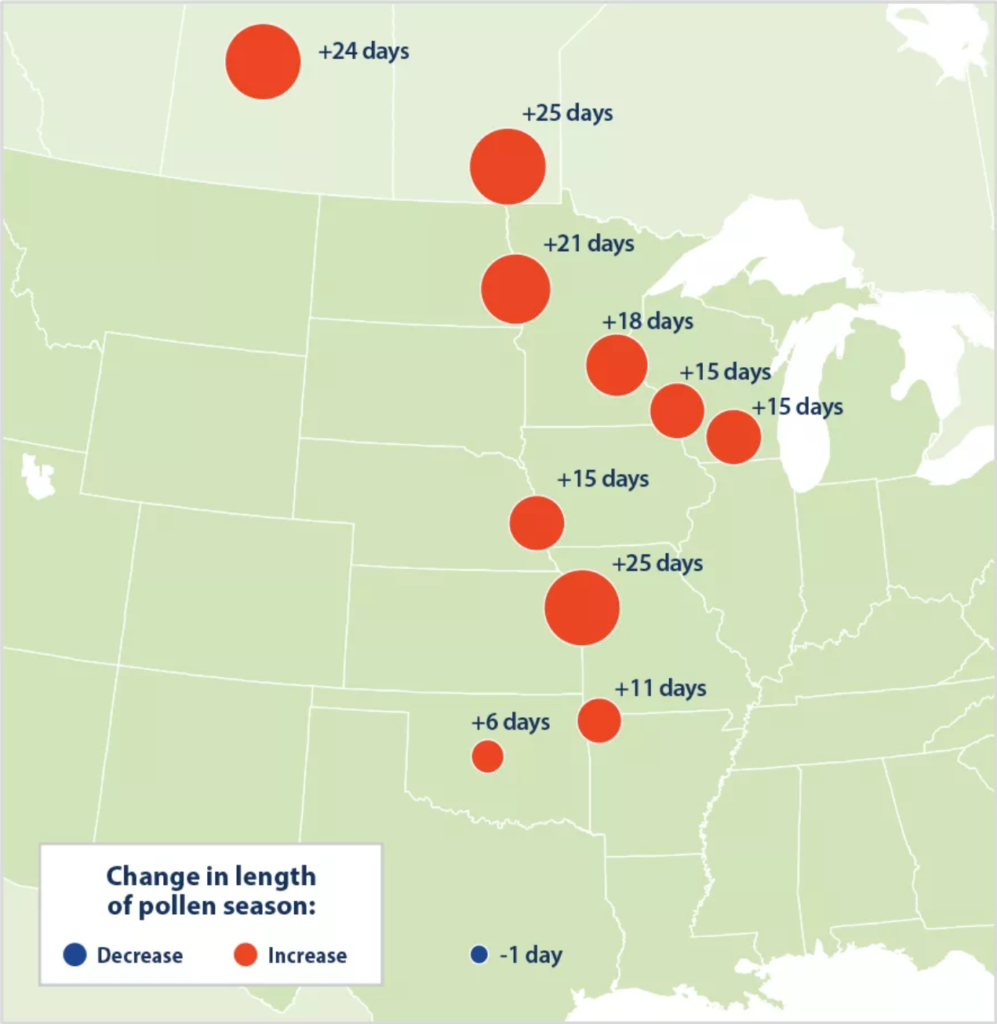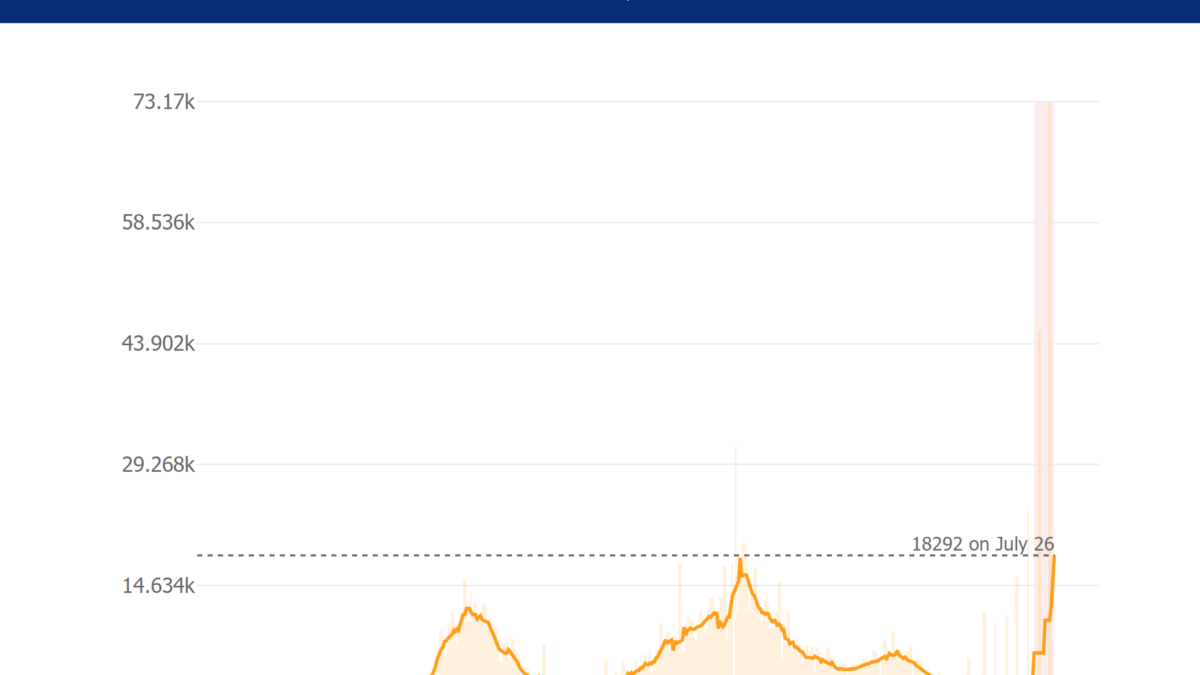It’s not your imagination: Allergy season gets worse every year – Pollen allergy seasons continue to get longer and more intense as temperatures rise
By Umair Irfan
21 May 2019
(Vox) – The weather is warming. The flowers are blooming. Noses are running. Eyes are watering.
It’s allergy season, and this year it’s been severe in states like Georgia, and cities like Chicago, where the frigid winter delayed the onset. Now that it’s late May, we’re moving away from peak tree pollen season and heading toward grass pollen season. So even more misery is in store.
Last month, massive yellow clouds of pine pollen fill the skies of North Carolina. Photographer Jeremy Gilchrist captured the eerie sight with a drone.
Forecasters in other parts of the country expect 2019 to be worse than usual, if not the worst year ever, for allergies. Just like 2018, the year before that, and the year before that.
Allergy season has become so predictably terrible that late-night comedians have taken to venting about warnings of the “pollen tsunami” and “pollen vortex” or a “perfect storm for allergies.”

But it turns out there’s truth behind the bombast: Pollen, an allergy trigger for one in five Americans, is surging year after year. And a major driver behind this increase is climate change. [more]
It’s not your imagination. Allergy season gets worse every year.



